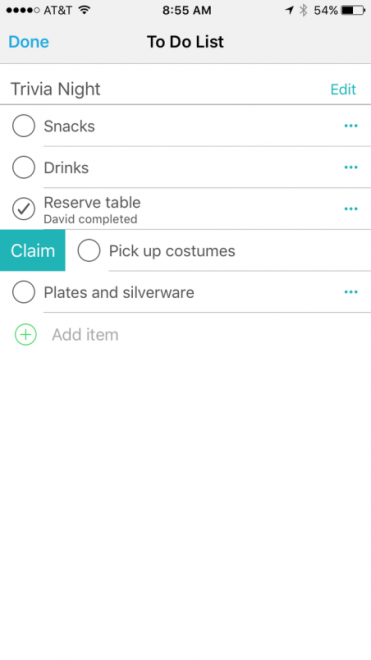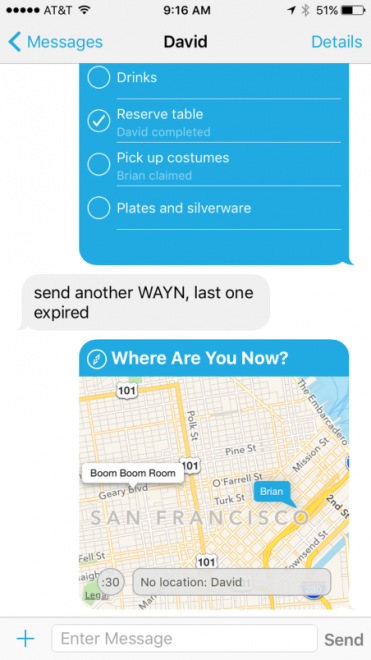The homescreen is dead. Or at least that’s what the many companies trying to make it so people never have to use the springboard from which they can launch countless apps would like you to think. Why bounce from app to homescreen to another app when everything can happen all in one place? Why hunt for an app when it can send up-to-the-minute push notifications right to your lock screen?
Questioning the foundational assumption upon which modern smartphones were built — this being that apps are discrete entities that rarely interact — has led developers to make software that breaks down the silos between services. These apps have snuck into software keyboards, made their way into one of the world’s most popular messaging apps, and found other ways to be omnipresent.
Cola, an iPhone messaging application that collects and presents information relevant to whatever its users are discussing, is exiting stealth today to enter that market. The app was created by former employees of Apple, Macromedia, AOL, and Adobe, and right now it’s asking people to sign up for its private beta test. It’s not clear when its creators plan to make Cola available to the general public.
Cola users will be able to schedule meetings, share task lists, and share their location through “Cola Bubbles” that present information without requiring people to leave the application. Eventually the app is supposed to get fizzier — sorry, add new features — that will allow its users to share information from third-party applications like the Fandango movie site or the FlightAware utility.
The “Cola Bubbles” will appear in-line for people using the app. For people who aren’t using it, however, the information will be sent through a link to a website. (Text messages are sent via SMS and will look the same across platforms.) This is supposed to make it so Cola users can use the app even if their friends aren’t, and it will also get the app in front of people who might not have heard of it.
It might still be frustrating for Cola users to make sure all their communications pass through the app. Non-users can’t initiate conversations; they’re restricted to responding to message threads started by Cola users. That might bother some people — how often do people start a new message thread? — but it will lead to some back-and-forth if a thread is closed or someone uses a new smartphone.
So how will Cola make money? “This is a free app. Everything you see now (and more) will always be free. Over time we will offer premium, for-pay features, so it will be a ‘freemium’ model,” chief executive David Temkin says in an email. “We have a set of ideas of what those features might be, but the first order of business for us is to get users using the app. For-pay features will come later.”
Temkin assures me that user information will not be shared with advertisers, and that communications through Cola are encrypted, with the company holding the encryption keys. This means Cola is more secure than unencrypted apps but less secure than other services, like Apple’s iMessage, that don’t hold the keys.
All of this is supposed to make Cola a one-stop app that makes messaging a little less frustrating. Like other messaging apps its utility is limited if users’ friends don’t use the service, and it might struggle in a world where many people have already downloaded a bunch of messaging services because the people they know are unable to settle on a single app through which they can all be reached.
Still, it’s clear that Cola is part of a growing movement to make it easier for people to manage their lives without fumbling around with a bunch of apps. Given how pernicious these types of apps have proven — like I said before, they’re everywhere, from the iPhone’s keyboard to Facebook’s Messenger — perhaps it really is time to ring a death knell for the iPhone’s homescreen.




